13 The Best Breathing Exercises
Introduction:
For most people, breathing is a basic human function that they take into consideration. Your blood cells take in oxygen when you breathe in and release carbon dioxide. Carbon dioxide is an unneeded substance that is exhaled after being carried back through your body.
Breathing is a function of the autonomic nervous system that is also under voluntary control and is a type of exercise that helps increase the overall effectiveness of the lungs. They can be beneficial in both individuals with healthy lungs and those with decreased lung function. Breathing exercises are exercises that are aimed at improving specific areas of respiratory control. They are commonly used to improve relaxation, reduce tension, and improve lung function.
Breathing exercises are deliberate, regulated adjustments in breathing patterns that deliver certain health benefits. They entail using various breathing patterns and tactics to affect your body and mind in a variety of ways, not just your breaths. One of the most powerful tools for easing tension and anxiety is your breath. Simple breathing exercises can make a tremendous difference if you incorporate them into your daily practice.
There are several anxiety breathing exercises to try the next time you feel anxious. Learn how to use breathing exercises to alleviate anxiety and stress. Once you have mastered the technique correctly, they are simple to perform and require little guidance from experts. The only prerequisite for enjoying the health advantages of breathing exercises is consistent practice. But after doing the breathing exercises, if you experience any discomfort, let your doctor know straight away.
Advantages:
Breathing exercises heal us in a variety of ways. They have numerous physical, emotional, mental, and spiritual advantages. Breathing exercises provide the following advantages
- To improve the respiratory system by increasing ventilation and strengthening the respiratory muscles.
- Regularly engaging in breathing exercises lowers blood pressure and benefits people with hypertension. It reduces the chance of stroke and heart disease.
- Improve the efficiency of breathing
- To alleviate stress and anxiety
- Improved physical capacities
- Breathing techniques help us to relax our bodies and clear our minds. They assist us in letting go of tension and worry. Thus, breathing exercises facilitate restful sleep.
- Increased vitality
- Frequent breathing exercises have been associated with improved concentration and focus. They also help us make better decisions and strengthen our memory.
- Assisting you in unwinding.
- Improving muscle function and preventing strain during activity.
- Breathing exercises help in the body’s detoxification by assisting it in removing carbon dioxide and harmful gases.
- Promoting the amount of oxygen content of the circulatory system.
- Breathing exercises strengthen the body’s defense system, which raises immunity.
Prior To Beginning, bear the following advice in mind:
- Pick a location for your breathing technique. It might be in a cozy chair, on the floor of your living room, or in your bed.
- Avoid pushing it. This may increase your level of stress.
- Attempt to complete it once or twice a day at the same time.
- Put on relaxed attire.
- A lot of breathing techniques only require a short while.
- To reap even bigger rewards, you can perform them for ten minutes or longer when you have more time.
Breathing Exercises Video
The Best Breathing Techniques:
It’s simple to get going. All you really need is a peaceful area where you can focus on your breathing. You can practice a few breathing techniques on a daily basis;
Deep Breathing
- Get a comfortable sitting position on the ground.
- Inhale using your nostrils.
- Allow the air to fill your belly.
- Exhale using your nostrils.
- Put a hand on your abdomen.
- Put the opposing hand on your chest.
- Feel your tummy lift as you take a breath in.
- Feel your tummy drop as you release your breath.
- Compared to the hand on your chest, the one on your belly should move more.
- Breathe deeply and fully three more times.
- As your belly rises and falls with each breath, take a deep breath.
- For a maximum of five minutes, keep breathing in this manner.

Breath Focus
- In a comfortable location, take a seat or lie down.
- Without attempting to alter your breathing, bring your attention to each breath.
- Repeat a few deep breaths and regular breaths in succession.
- Observe any variations between deep breathing and regular breathing.
- Take note of how taking deep breaths causes your abdomen to expand.
- Observe the difference in sensation between shallow and deep breathing.
- Spend a few minutes practicing your deep breathing.
- Keeping your tummy relaxed, place one hand beneath your belly button and observe how it rises with each breath and descends with each exhale.
- Sigh aloud every time you release a breath.
- Combine this deep breathing with visualization and a focus word or phrase that will encourage relaxation to start the breath concentration practice.
- For a maximum of five minutes, keep breathing in this manner.
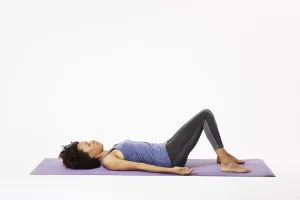
Progressive Muscle Relaxation
- Easily lay out on the ground.
- Breathe deeply a few times to help relax.
- Take a deep breath in.
- Your muscles in your feet should be taut.
- Breathe out.
- Take a deep breath in.
- Tighten your calf muscles.
- Breathe out.
- Release the constriction in your lower legs.
- Ascend your body gradually.
- Tensify every muscle in your body.
- This includes your arms, shoulders, neck, face, fingers, abdomen, and chest.
- For a maximum of five minutes, keep breathing in this manner.
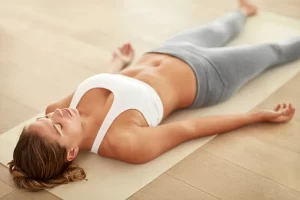
Pursed lip breathing
To do Pursed lip breathing:
- Let your shoulders and neck drop.
- Shut your mouth and take a slow, two-second breath through your nose.
- It’s okay to breathe normally; taking a deep breath is not necessary.
- Counting to oneself could be useful.
- As you breathe in, you should gradually feel your stomach grow.
- Placing their hands on their stomachs is beneficial for some people.
- As if you were going to whistle or softly blow on a hot beverage, purse (pucker) your lips.
- For four or more seconds, slowly and softly release your breath through pursed lips.
- Counting to oneself could be useful.
- As you release the breath, your stomach should gradually get smaller.
- For a maximum of five minutes, keep breathing in this manner.
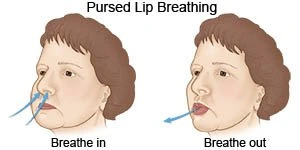
Diaphragmatic breathing (sitting)
To do Diaphragmatic breathing:
- With your knees bowed and your shoulders, head, and neck relaxed, take a comfortable seat.
- Put one hand right below your rib cage and the other on your upper chest.
- It will allow you to feel the movement of your diaphragm as you breathe.
- Take slow, deep breaths through your nose until your stomach pushes against your hand.
- Try not to move the hand that is on your chest at all.
- As you release breath through pursed lips, contract your abdominal muscles to cause your stomach to move back in.
- You need to keep the hand as still as possible on your upper chest.
- For a maximum of five minutes, keep breathing in this manner.
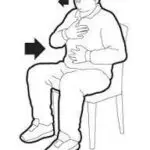
Lion’s breath
- Place yourself in a relaxed sitting position.
- You can cross your legs or kick back.
- Spread your fingers wide and press your hands against your knees.
- Take a deep breath through your nose and widen your eyes.
- Simultaneously, spread your lips wide and extend your tongue, bringing the tip closer to your chin.
- Make a lengthy “ha” sound as you exhale through your mouth, contracting the muscles at the front of your throat.
- You can shift your focus to the tip of your nose or the area between your eyebrows.
- For a maximum of five minutes, keep breathing in this manner.
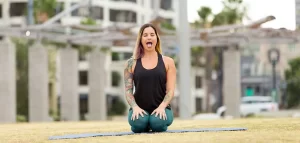
Alternate nostril breathing
- Adopt a comfortable sitting position.
- Raise your right hand in the direction of your nose, keeping your fingers extended and pressing your middle and first fingers down towards your palm.
- Using your right thumb, softly shut your right nostril after exhaling.
- Using your right pinky and ring fingers, shut your left nostril after taking a breath through it.
- Breathe out via your right nostril after releasing your thumb.
- After taking a breath via your right nostril, shut it.
- In order to exhale from your left nostril, release your fingers.
- There is only one cycle in this.
- For a maximum of five minutes, keep breathing in this manner.
- Exhale on the left side to end your session.

Equal breathing
- Select a pleasant sitting position.
- Inhale and exhale through your nostrils.
- Make sure the duration of each inhalation and exhalation is equal by counting.
- As an alternative, repeat a word or brief sentence with each breath in and out.
- If it makes you feel better, you might add a little pause for breath retention following each inhalation and exhalation. (Naturally occurring pauses occur during breathing.)
- For at least five minutes, keep repeating this breathing technique.
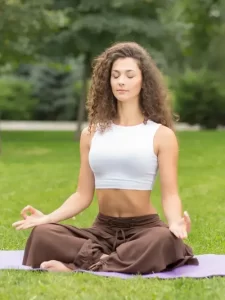
Sitali breath
- Pick a cozy sitting position.
- Bring the outer edges together by sticking out and curling your tongue.
- You can purse your lips if your tongue is unable to accomplish this.
- Breathe in through your lips.
- Breathe out using your nose.
- For a maximum of five minutes, keep breathing in this manner.
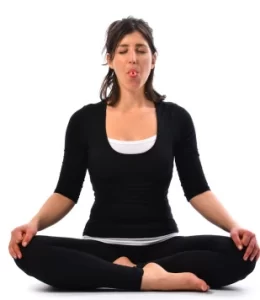
Humming bee breath (Bhramari)
- Close your eyes and ease your facial tension.
- First, place your fingers on the section of your ear canal that is partially covered by the tragus cartilage.
- As you breathe, softly press your fingertips into the cartilage.
- Make a loud humming noise while keeping your mouth shut.
- Proceed for however long feels comfortable.
- For a maximum of five minutes, keep breathing in this manner.
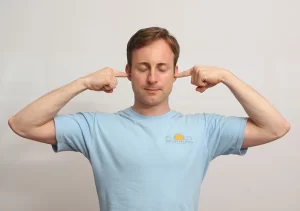
Box Breathing
- To the count of four, exhale.
- For four counts, hold your lungs empty.
- Take a four-count breath in.
- Count to four while holding your breath in your lungs.
- Let out a breath and resume the pattern.
- For a maximum of five minutes, keep breathing in this manner.

4-7-8 Breathing
- For the entire exercise, place and maintain the tip of your tongue against the tissue ridge behind your top front teeth.
- Using your mouth, completely release the breath, producing a “whoosh” sound.
- Shut your mouth and take a quiet, four-count breath via your nose.
- For seven counts, hold your breath.
- Make a whoosh sound and let out all of your air through your mouth, counting to eight.
- For a maximum of five minutes, keep breathing in this manner.
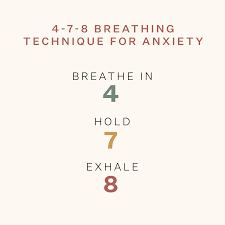
Resonance Breathing
- Close your eyes while sitting down.
- Breathe gently via your nose for six seconds while keeping your mouth shut.
- Avoid breathing in too much air.
- Take a six-second breath out, letting it go out of your body naturally and gently without pushing.
- For a maximum of five minutes, keep breathing in this manner.
- Spend a few more minutes in stillness, paying attention to your body’s sensations.

Precautions:
- Do not allow an individual to take a very long expiration.
- Allowing the individual to initiate inspiration with accessory muscles and the upper chest is not permitted.
- Relaxed or lightly controlled exhalation is recommended.
- To avoid hyperventilation, limit the patient’s deep breathing to three or four inspirations and expirations at a time.
Consider a break from exercising and stop working out if you:
- Experiencing chest pain.
- Feeling weak.
- Have you feeling dizzy or lightheaded
- You are experiencing pressure or pain in your chest, neck, arm, jaw, or shoulder.
- Any other symptoms that concern you?
Conclusion:
Most of these breathing exercises are available for immediate use. Spend some time experimenting with various breathing exercises. At a minimum, a couple of times a week, set aside a specific time. These are activities that you can perform all day long. One of your strongest defenses against existential angst, daily stress, and irritation is your breath. After you master the craft of expert Breathing in and out, you’ll probably start to feel better. You may have noticed an increase in your resilience and grace. By inducing the relaxation response and activating the parasympathetic nervous system, breathing exercises aid in the relief of anxiety.
Breathing deeply and slowly can help you improve oxygen intake, manage your breathing, and reduce anxiety symptoms. These breathing techniques are portable and convenient. It is beneficial to perform these exercises a few times when you are at ease. Muscle memory may be developed as a result, making it simpler to use these techniques under pressure or anxiety.
Boosting our awareness of and incorporating breathing exercises into our daily routine has numerous benefits, including fostering serenity, boosting focus, and performing at our best.
FAQ:
Did breathing techniques work?
Research shows good breath control can greatly enhance well-being, reduce stress, and ease anxiety.
Why are breathing techniques beneficial for anxiety?
Breathing exercises facilitate a state of relaxation in your body, which in turn promotes a state of relaxation in your brain.
Which are the best methods for deep breathing?
Numerous deep breathing techniques, such as resonance breathing, belly breathing, box breathing, and alternate nostril breathing, can help reduce anxiety. Try out a few different ways and observe your feelings. You could find that some techniques work better for you than others.
The way can I quit breathing heavily?
Controlled breathing
Put one hand on your tummy, the other on the centre of your chest.
To help you relax and concentrate on your breathing, close your eyes.
With your mouth shut, inhale slowly through your nose.
Breathe slowly, deeply, smoothly, and with as little effort as you can.
What are the 5 main breathing techniques?
Breath Focus
Progressive Muscle Relaxation
Pursed lip breathing
Alternate nostril breathing
4-7-8 Breathing
Is it serious to breathe heavily?
Usually, there’s no reason to worry about the symptoms as long as they go away after taking a few deep breaths, relaxing for a short while, or spending some time in the shade. However, medical attention should be sought right away if the person experiences worsening symptoms such as dizziness or confusion, or if their heavy breathing gets worse.
What makes breathing tough?
Respiratory issues, including lung cancer, asthma, and chronic obstructive pulmonary disease (COPD). cardiac issues, including heart failure or an attack. airway infections, including the flu, COVID-19, pneumonia, bronchitis, croup, or simply a cold. an anxiety or panic episode.
Which breathing technique is preferable?
In addition to promoting relaxation and nervous system control, abdominal breathing has several other health advantages.
Why does belly breathing perform better?
Belly breathing calms you down and increases the amount of oxygen in your lungs, which helps you better manage your breathing when you’re out of breath. Sit in a comfortable chair, sit up straight, place your hands on your belly, or lie down if it’s more comfortable for you to practice belly breathing.
How many breathing exercises are done each day?
You mustn’t want to first try these exercises when you’re short of breath, You taught to test them when you’re breathing normally, and then when you’re more comfortable, use them when breathing is difficult. Both of these exercises should ideally be performed for five to ten minutes each day.
How effective are breathing exercises?
Your breathing is a powerful tool for lowering stress and anxiety. Simple breathing exercises can make a tremendous difference if you incorporate them into your daily practice. Before you begin, keep the following suggestions in mind: Select a location for your breathing workout.
Why is it beneficial to breathe?
All mechanism in the body is oxygen-dependent. From cognition to digestion, proper breathing can not only improve your mental clarity, but can also help you sleep better, digest food more efficiently, increase your immune response, and reduce stress levels.
The way can I encourage myself to breathe more deeply?
Breathe in through your nose for four counts, hold your breath for two, and then exhale for six counts. Repeat a few times. If you’re back at work, you can also practice on the go, such as on your daily stroll or commute.
Is deep breathing worthwhile?
Daily deep breathing exercises (DBE) can reduce stress and anxiety as well as lower resting blood pressure (BP)
What effect does breathing have on the brain?
Deep breathing and relaxation engage the parasympathetic nervous system, which sends a signal to your brain informing the worried part that you are secure and do not need to use the fight, flight, or freeze reaction. Deep breathing increases the amount of oxygen available to the thinking brain.
References:
- Fowler, P. (January 11, 2018). How to Breathe to Reduce Stress. WebMD. Breathing techniques for relieving stress: https://www.webmd.com/balance/stress-management Citation inside the text: In Fowler (2018)
- Cronkleton, E. ( March 24, 2023). Ten Breathing Methods for Reducing Stress and Other Things. The website Healthline provides information about breathing exercises. Citation within the text: (Cronkleton, 2023)
- Lcpc, S. A. M. (January 27, 2023). Nine Breathing Techniques to Help Reduce Anxiety. Verywell Intelligence. abdominal breathing (2584115) – https://www.verywellmind.com Reference inside text: (Lcpc, 2023)
- Image 2, Ryt, A. P. (March 19, 2020). How to Perform the Yoga Breath (Dirga Pranayama) in Three Parts. well-fitting. This three-part breath drill is part of the Pranayama series (3566762). Reference inside text: (Ryt, 2020)
- Image 3, K. on October 12, 2022. Eight Beginner Tips for Progressive Muscle Relaxation Techniques. Meraki Street. Here are eight beginner-friendly methods for progressive muscle relaxation: https://www.merakilane.com/Reference in Text: (2022)
- Image 6, Six Breathing Techniques to Lower Stress. September 5, 2023. The following URL points to an in-text citation for the article: 6 Breathing Exercises to Reduce Stress (2023). Accessed April 20, 2023
- Image 7, Simplest Health Tip Ever: Why You Should Try Alternate Nostril Breathing. 28 September 2018). The Whiteboard. The Chalkboard Magazine (2018) provides an in-text citation for this article: “Simplest Health Tip Ever: Why You Should Try Alternate Nostril Breathing”
- Image 8, A. July 16, 2023. Five Breathing Exercises to Lower Blood Pressure for Calm Breath. Fitsri Yoga. Breathing exercises for hypertension: https://www.fitsri.com/web-stories In-text Reference: (2023)
- Image 9, Macauley, G. (January 23, 2019). YogaHara. http://www.yogahara.com.au/news/2017/1/23/sitali Sitali and Sitkari Pranayama Reference inside text: (Macauley, 2019)
- Image 10, Humming Bee Breathing, by Bhramari Pranayama. (October 10, 2018). Living Art (Singapore). Bhramari Pranayama, Humming Bee Breathing: https://www.artofliving.org/sg-en Reference within the text: Bhramari Pranayama, “Humming Bee Breathing,” 2018
- Image 13, Dr. Rosalba Courtney on resonance frequency breathing. June 27, 2017. Dr. Courtney Rosalba. https://www.rosalbacourtney.com/resonance-frequency-breathing/ In-text citation: Dr. Rosalba Courtney’s 2017 article on resonance frequency breathing

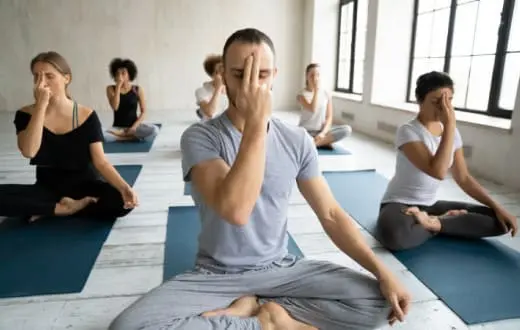

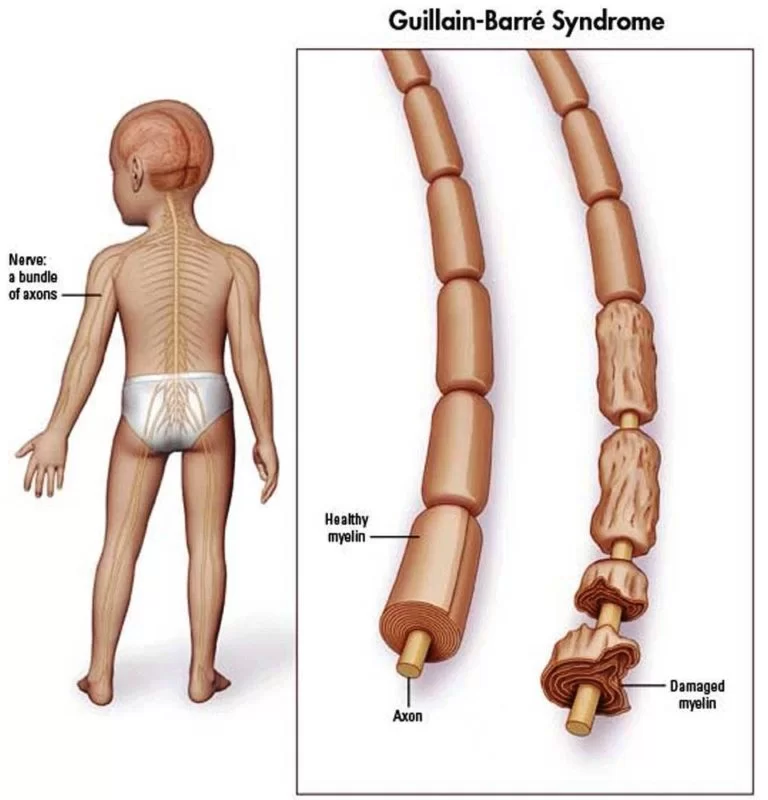
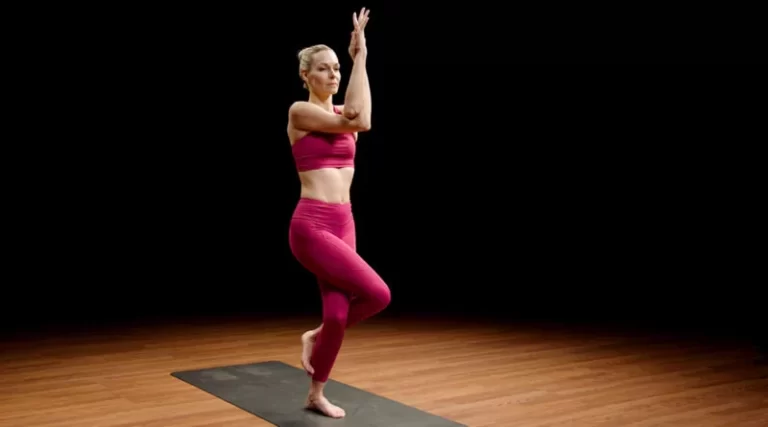

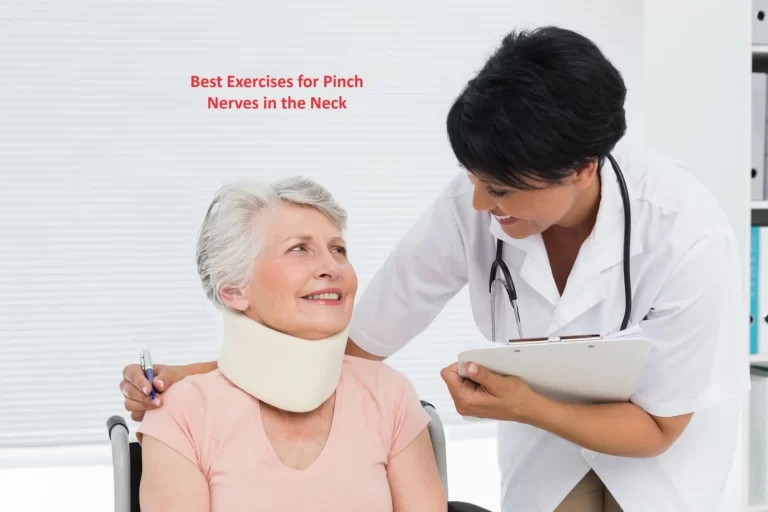
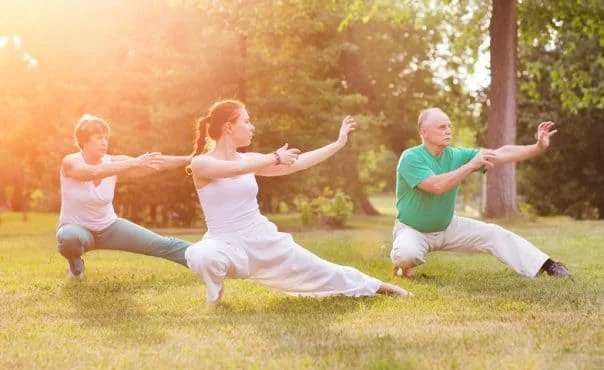
2 Comments